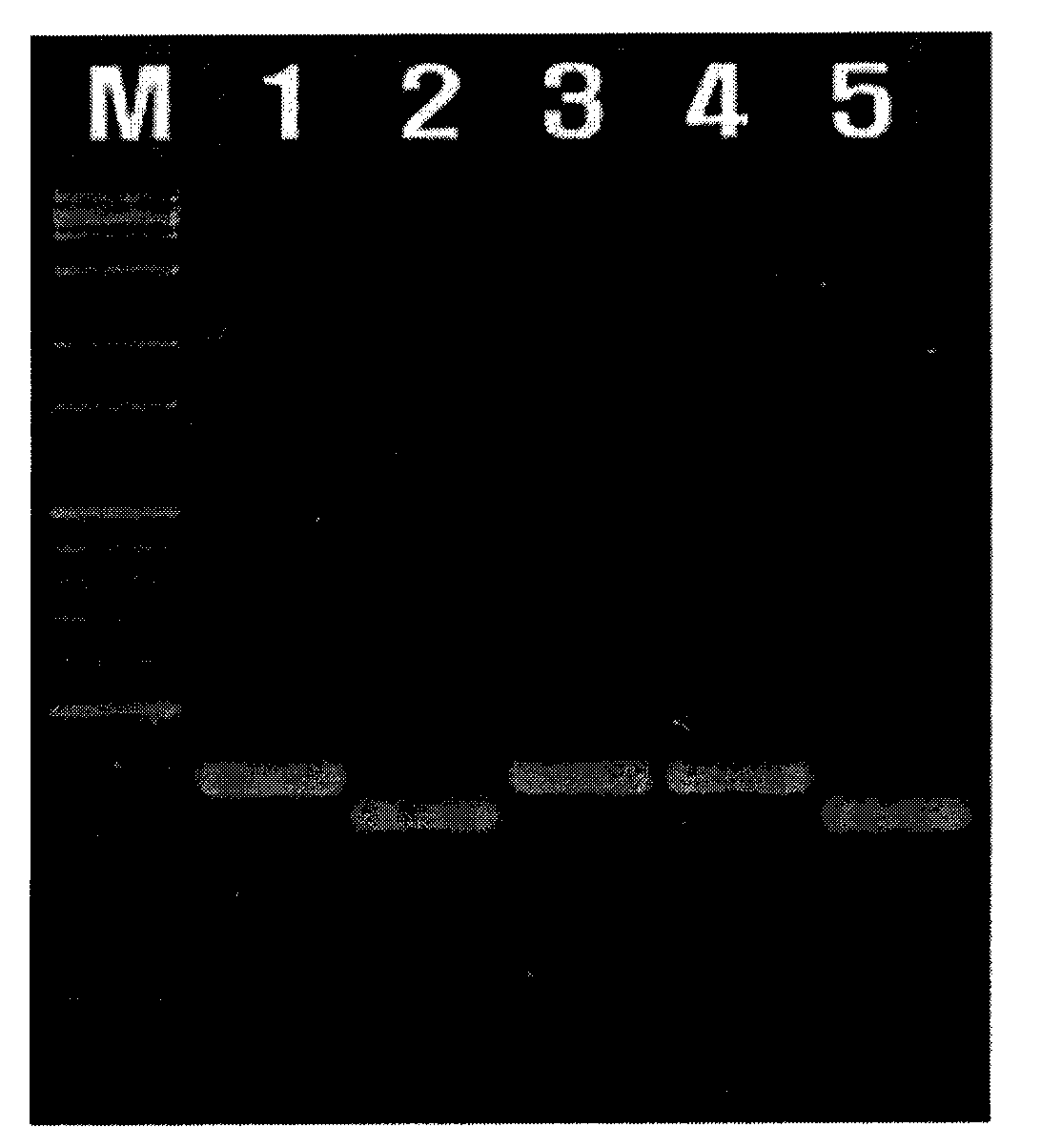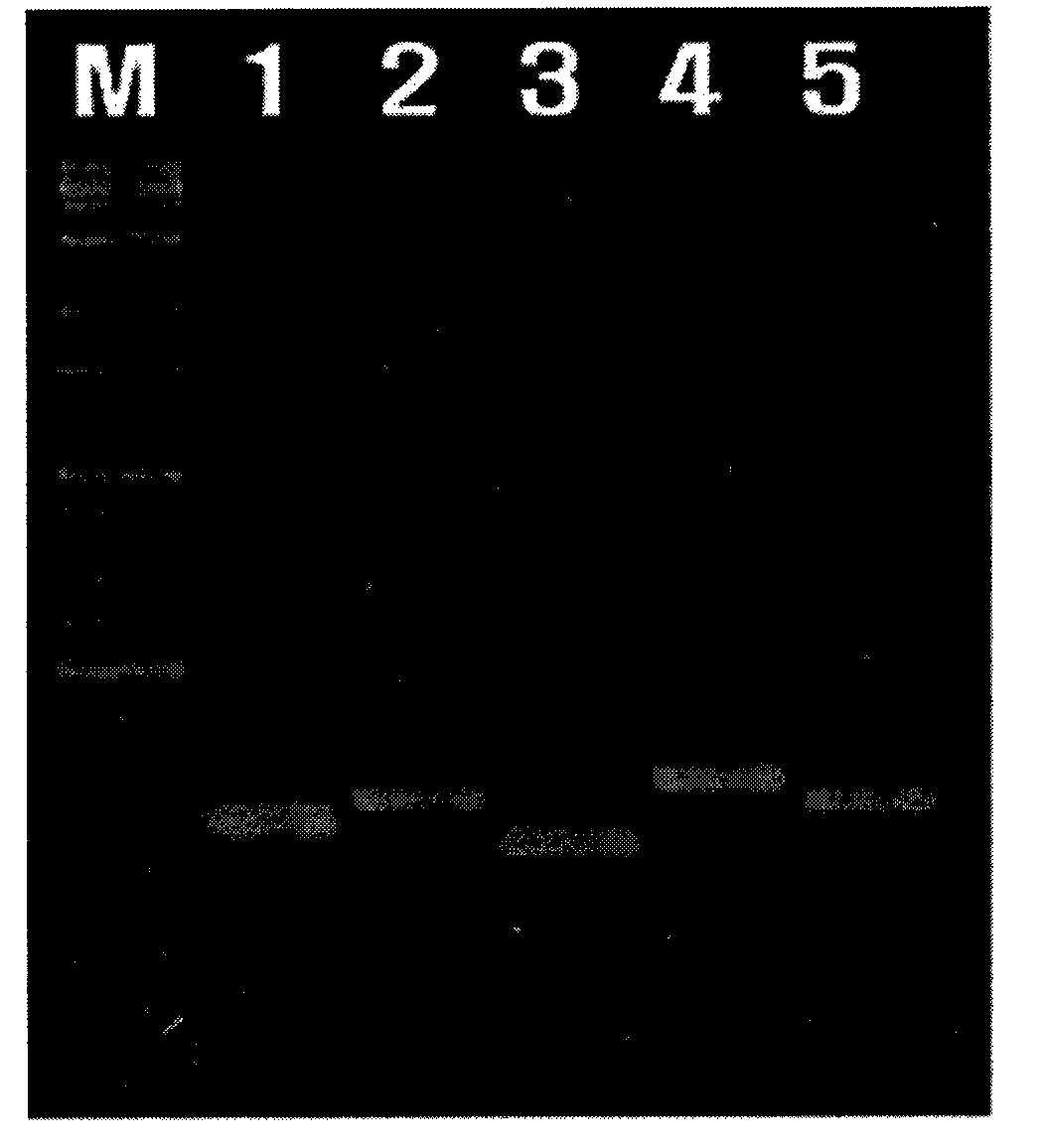Method for using sts primer to identify ginseng species
A technology of ginseng and varieties, applied in the directions of biochemical equipment and methods, microbial determination/inspection, DNA/RNA fragments, etc., can solve problems such as poor differentiation and consistency, prevent variety mixing, and improve genetic stability Effect
- Summary
- Abstract
- Description
- Claims
- Application Information
AI Technical Summary
Problems solved by technology
Method used
Image
Examples
Embodiment 1
[0052]DNA (1 μg) extracted from young leaves of a standard variety Lianfeng grown in a ginseng field of the Ginseng and Herbal Research Institute of the Academy of Crop Science of the Rural Development Administration was cleaved with a methylation-insensitive restriction enzyme SpeI. The cleavage product was subjected to agarose gel electrophoresis, and after the DNA was recovered using a PCR product recovery kit (Qiagen), it was ligated with the prepared pGEM_7zf (Promega). The ligated mixture was transformed into Escherichia coli (Stratagene) with wild-type Mcr A and BC genes by electroporation, and the so-called "active genome region-enriched semi-genomic DNA library" (active genome region-enriched semi-genomic DNA library) was constructed. ”, thus obtaining a total of 2,039 clones.
Embodiment 2
[0054] Delegate Solgent( ) Co., Ltd. performed base sequence analysis on the obtained clones. STS primers were synthesized based on the analyzed base sequence. The size of the clones obtained above was 0.6kb-1.3kb, and a total of 343 clones were prepared, thereby preparing a total of 262 pairs of STS primers.
Embodiment 3
[0056] The composition of the PCR reaction mixture (50 μl) for observing the polymorphism among ginseng varieties is as follows: 20 ng of genomic DNA of ginseng, 0.4 μM of each primer, 250 μM of dNTPs, 10 × PCR reaction buffer solution (75 mM Tris-HCl (pH 9.0 ), 2.5mM MgCl 2 , 15mM (NH 4 ) 2 SO 4 , BSA 100 μg / ml), 0.5 units of DNA polymerase, and the rest as distilled water. In order to effectively utilize the synthetic STS primer pair and suppress the excessive appearance of non-specific amplification products, reasonable primer Tm values were determined after PCR was performed at an annealing temperature range of 55-65°C. The results determined that the PCR reaction conditions were as follows: the template DNA was pre-denatured at 95°C for 5 minutes; then denatured at 95°C for 30 seconds, annealed at 65°C for 30 seconds, and extended at 72°C for 1 minute, repeated for a total of 40 cycles; finally , extended at 72°C for 5 minutes to obtain specific amplification produc...
PUM
 Login to View More
Login to View More Abstract
Description
Claims
Application Information
 Login to View More
Login to View More - R&D
- Intellectual Property
- Life Sciences
- Materials
- Tech Scout
- Unparalleled Data Quality
- Higher Quality Content
- 60% Fewer Hallucinations
Browse by: Latest US Patents, China's latest patents, Technical Efficacy Thesaurus, Application Domain, Technology Topic, Popular Technical Reports.
© 2025 PatSnap. All rights reserved.Legal|Privacy policy|Modern Slavery Act Transparency Statement|Sitemap|About US| Contact US: help@patsnap.com



